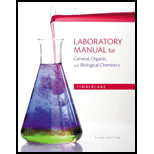
Concept explainers
a.
To determine:
The identification of the level of protein structure associated with the given statement. a. more than one polypeptide.
Introduction:
The structure of proteins are of four types that are primary, secondary, tertiary and quaternary structures. Each levels tells a different types of ineractions between amino acids in the protein. Together all these structures provides a complete three dimensional structure of a protein.
The protein structure depends on its amino acid sequence and the bonds between atoms in both the polypeptide backbone and in amino acid side chains.
b.
To determine:
The identification of the level of protein structure associated with the given statement. b. hydrogen bonding between backbone atoms.
Introduction:
The structure of proteins are of four types that are primary, secondary, tertiary and quaternary structures. Each levels tells a different types of ineractions between amino acids in the protein. Together all these structures provides a complete three dimensional structure of a protein.
The protein structure depends on its amino acid sequence and the bonds between atoms in both the polypeptide backbone and in amino acid side chains.
c.
To determine:
The identification of the level of protein structure associated with the given statement. c. the sequence of amino acids.
Introduction:
The structure of proteins are of four types that are primary, secondary, tertiary and quaternary structures. Each levels tells a different types of ineractions between amino acids in the protein. Together all these structures provides a complete three dimensional structure of a protein.
The protein structure depends on its amino acid sequence and the bonds between atoms in both the polypeptide backbone and in amino acid side chains.
d.
To determine:
The identification of the level of protein structure associated with the given statement. d. intermolecular forces between R groups.
Introduction:
The structure of proteins are of four types that are primary, secondary, tertiary and quaternary structures. Each levels tells a different types of ineractions between amino acids in the protein. Together all these structures provides a complete three dimensional structure of a protein.
The protein structure depends on its amino acid sequence and the bonds between atoms in both the polypeptide backbone and in amino acid side chains.
Want to see the full answer?
Check out a sample textbook solution
Chapter 10 Solutions
EBK LABORATORY MANUAL FOR GENERAL, ORGA
- Feedback (7/10) Draw the major product of this reaction. Ignore inorganic byproducts. Assume that the water side product is continuously removed to drive the reaction toward products. Incorrect, 3 attempts remaining Ο (CH3CH2)2NH, TSOH Select to Draw V N. 87% Retryarrow_forwardIf I want to obtain (1,1-dipropoxyethyl)benzene from 1-bromopropene, indicate the product that I have to add in addition to NaOH.arrow_forwardIndicate the products obtained when fluorobenzene reacts with a sulfonitric acid mixture (HNO3 + H2SO4). Indicate the majority if necessary.arrow_forward
- Indicate the products obtained when chlorobenzene acid reacts with a sulfonitric acid mixture (HNO3 + H2SO4). Indicate the majority if necessary.arrow_forwardIndicate the products obtained by reacting benzenesulfonic acid with a sulfonitric acid mixture (HNO3 + H2SO4). Indicate the majority if necessary.arrow_forwardIndicate the products obtained by reacting ethylbenzene with a sulfonitric acid mixture (HNO3 + H2SO4). Indicate the majority if necessary.arrow_forward
- Indicate the products obtained when tert-butylbenzene reacts with a sulfonitric acid mixture (HNO3 + H2SO4). Indicate the majority if necessary.arrow_forwardIndicate the products obtained when acetophenone reacts with a sulfonitric acid mixture (HNO3 + H2SO4). Indicate the majority if necessary.arrow_forwardIndicate the products obtained from the reaction of N-(4-methylphenyl)acetamide with a sulfonitric acid mixture (H2SO4 + HNO3). Indicate the majority if necessary.arrow_forward
- Indicate the products obtained from the reaction of 4-(trifluoromethyl)benzonitrile with a sulfonitric mixture (H2SO4 + HNO3). Indicate the majority if necessary.arrow_forwardIndicate the products obtained in the reaction of p-Toluidine with a sulfonitric acid mixture (H2SO4 + HNO3). Indicate the majority if necessary.arrow_forwardIndicate the products obtained from the reaction of 4-methylbenzonitrile with a sulfonitric acid mixture (H2SO4 + HNO3). Indicate the majority if necessary.arrow_forward
 Introductory Chemistry: A FoundationChemistryISBN:9781337399425Author:Steven S. Zumdahl, Donald J. DeCostePublisher:Cengage Learning
Introductory Chemistry: A FoundationChemistryISBN:9781337399425Author:Steven S. Zumdahl, Donald J. DeCostePublisher:Cengage Learning World of ChemistryChemistryISBN:9780618562763Author:Steven S. ZumdahlPublisher:Houghton Mifflin College Div
World of ChemistryChemistryISBN:9780618562763Author:Steven S. ZumdahlPublisher:Houghton Mifflin College Div World of Chemistry, 3rd editionChemistryISBN:9781133109655Author:Steven S. Zumdahl, Susan L. Zumdahl, Donald J. DeCostePublisher:Brooks / Cole / Cengage Learning
World of Chemistry, 3rd editionChemistryISBN:9781133109655Author:Steven S. Zumdahl, Susan L. Zumdahl, Donald J. DeCostePublisher:Brooks / Cole / Cengage Learning Chemistry for Today: General, Organic, and Bioche...ChemistryISBN:9781305960060Author:Spencer L. Seager, Michael R. Slabaugh, Maren S. HansenPublisher:Cengage Learning
Chemistry for Today: General, Organic, and Bioche...ChemistryISBN:9781305960060Author:Spencer L. Seager, Michael R. Slabaugh, Maren S. HansenPublisher:Cengage Learning
 Chemistry: Principles and ReactionsChemistryISBN:9781305079373Author:William L. Masterton, Cecile N. HurleyPublisher:Cengage Learning
Chemistry: Principles and ReactionsChemistryISBN:9781305079373Author:William L. Masterton, Cecile N. HurleyPublisher:Cengage Learning





